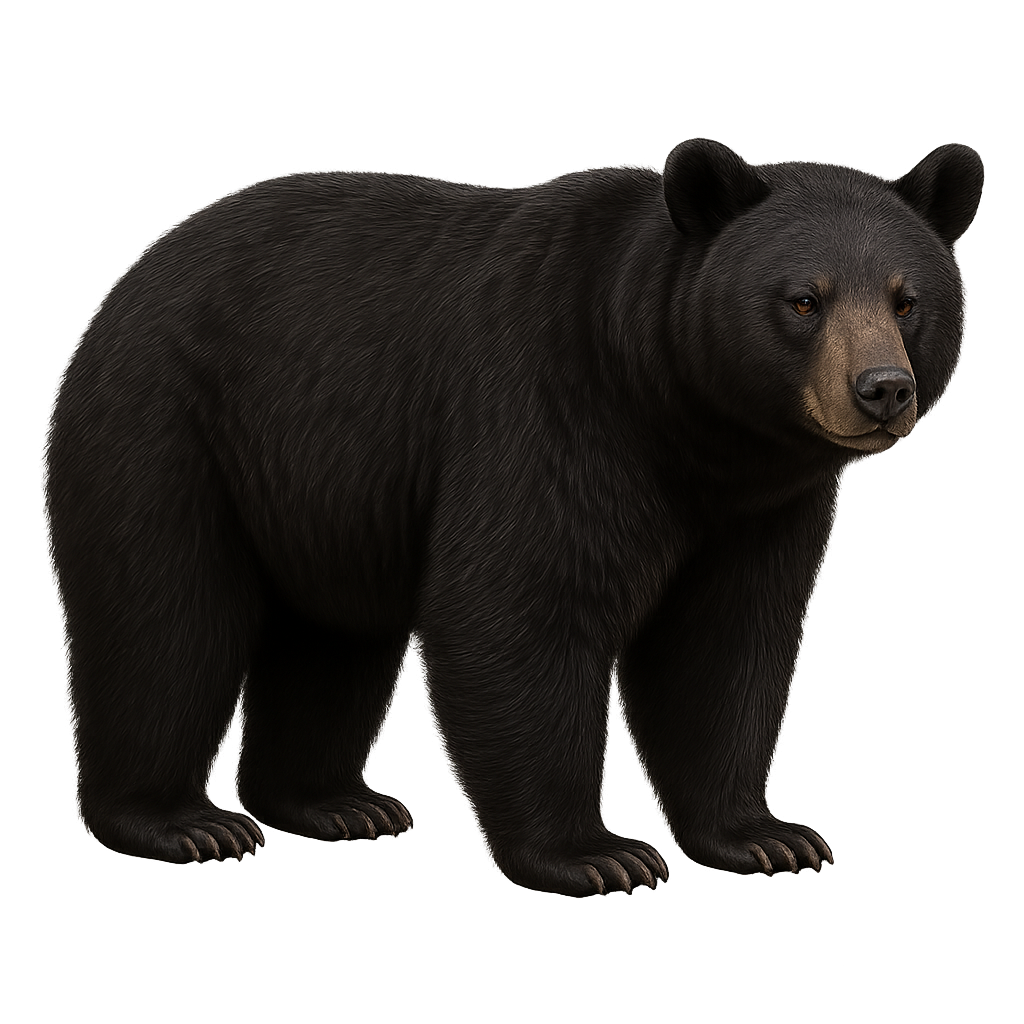Your wildlife photography guide.
Explore the american black bear in detail, study its behavior, prepare your shots.
Where to observe and photograph the american black bear in the wild
Learn where and when to spot the american black bear in the wild, how to identify the species based on distinctive features, and what natural environments it inhabits. The WildlifePhotographer app offers tailored photography tips that reflect the american black bear’s behavior, helping you capture better wildlife images. Explore the full species profile for key information including description, habitat, active periods, and approach techniques.
American Black Bear
Scientific name: Ursus americanus

IUCN Status: Least Concern
Family: URSIDAE
Group: Mammals
Sensitivity to human approach: Shy
Minimum approach distance: 50 m
Rut period: June to July
Gestation: 220-240 jours
Births: January to February
Habitat:
Mixed forests of North America
Activity period :
Mainly active at night, generally discreet during the day.
Identification and description:
The American Black Bear is a large carnivore primarily found in North America, in forests, mountains, and wooded areas. It measures between 1.5 and 2.5 meters in length and weighs between 45 and 250 kg, depending on the subspecies and habitat conditions. Its coat ranges from black to light brown, and it has a short muzzle and a large head. The Black Bear is an omnivore, primarily feeding on fruits, berries, nuts, roots, fish, small mammals, and sometimes carrion. It is also an excellent climber and a skilled swimmer, capable of moving through trees and crossing rivers in search of food. While its population remains relatively stable, the Black Bear is threatened by habitat loss, vehicle collisions, and hunting.
Recommended lens:
300 mm – adjust based on distance, desired framing (portrait or habitat), and approach conditions.
Photography tips:
Approach slowly and discreetly, using a telephoto lens, to avoid disturbing the black bear, which can quickly become wary and move away if disturbed.
Photograph early in the morning or late in the afternoon, when the light is soft and the bear is more active, often foraging for food in forests or near water sources.
Capture moments of natural behavior: The black bear is an omnivore and spends a lot of time searching for food, providing opportunities for interesting photos when it is foraging or climbing trees.
Be patient and respectful: Respecting the black bear's space is crucial. Do not follow it too closely and ensure you do not disturb its feeding habits or territory.
The black bear is a species of minor concern, but it is important to respect its natural habitat and not disturb its behaviors. Avoid any interference with its feeding or breeding areas and follow local conservation rules to preserve this species.
The WildlifePhotographer App is coming soon!
Be the first to explore the best nature spots, track rutting seasons, log your observations, and observe more wildlife.
Already 1 431 wildlife lovers subscribed worldwide

